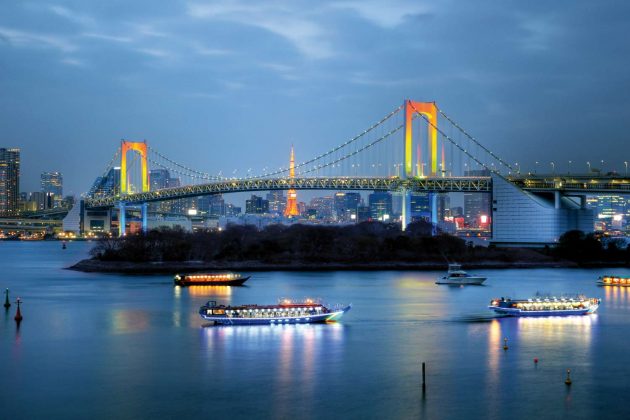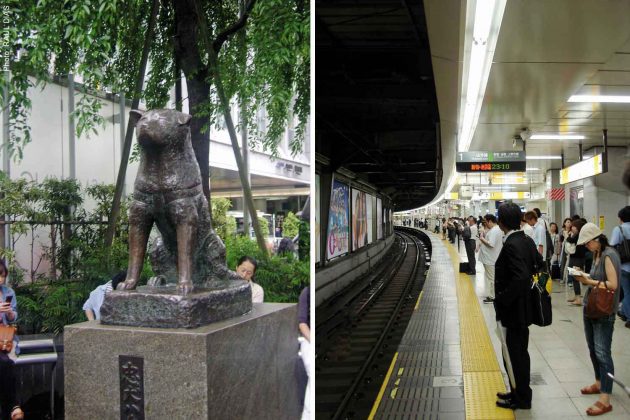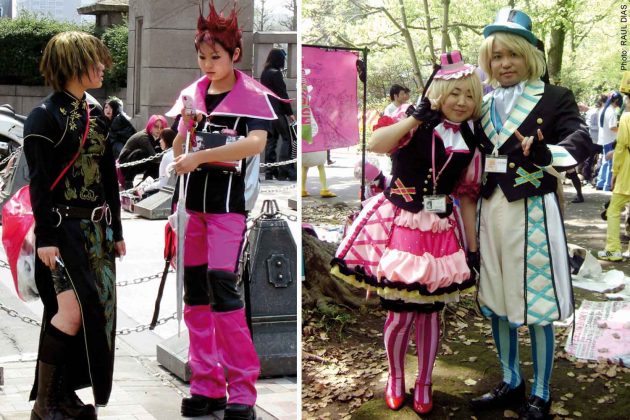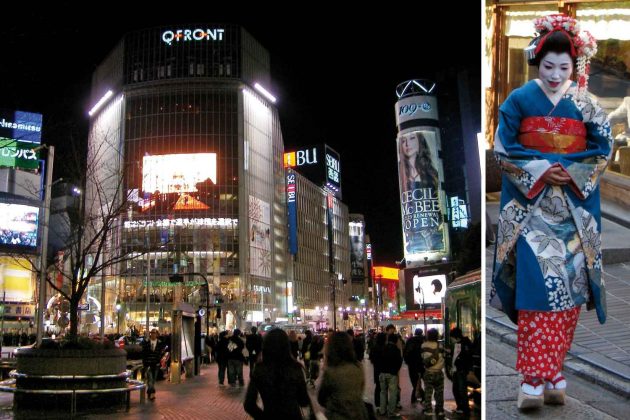Nobuyuki Kuzuya is a rather odd character. For one, this true-blue Tokyoite and die-hard Indophile spouts dialogues from Bachchan classics like Deewar and Sholay in near perfect Hindi. ‘Munni’, ‘Sheela’ and ‘Anarkali’ have him grooving to their item numbers and all he craves for is another bite of a vada pav that he remembers fondly from his three-year stint in Mumbai working for an international hotel—which is where we met and became friends. All this made him my perfect de facto weekend guide through the always bizarre, often befuddling, but supremely beautiful urbs primus that is Tokyo.
Our rendezvous point was just outside the bustling Shibuya station in south west Tokyo next to the Hachiko statue of the faithful Akita dog that would come to the station every evening to wait for its dead master to return, as it did when the professor was alive. It did so for 11 years till it died and is now fondly remembered by all those who pass through this otherwise crowded station. But that day, being a Saturday morning, the station was relatively easy for me to navigate through and ultimately spot Nobuyuki, aided by the fact that he stood out like a psychedelic popsicle in his rani pink kurta and turquoise jeans.
Totally clueless about what was in store for me, we hopped onto the JR Line subway train to super trendy Harajuku which is a youth-infested, noisy and bohemian neighbourhood of Tokyo where anyone over the age of 30 might as well crawl under a rock and hibernate for life! It is here that hundreds of otherwise average looking teens come to transform themselves every weekend into everything from Manga comic characters to super heroes as part of the whole ‘Cosplay’ [costume play] counter culture. Interestingly, Nobuyuki was quick to point out that very often these kids—who preen and pose for tourists’ cameras with abandon—are bullied in school through the week and look at this drama of alter ego dress up as a way of escape, just like a repressed Peter Parker who metamorphoses into Spider Man or a Selina Kyle into Catwoman.
Having heard of Tokyo’s reputation as the world’s vending machine capital, I made sure to sneak into an alley in Harajuku that is famous for housing the most bizarre vending machines that peddle everything from live lobsters that you can pick up with robotised fingers to hot pizzas, footballs, eggs and even neck ties. Having no need for the aforementioned goodies, I settled for a refreshingly cold mini bottle of sake that hit the right spot immediately.
A quick walk north from Harajuku, we found ourselves in the glitzy and glamorous entertainment district of Shinjuku, where despite the fact that we were still in broad day light, the neon signboards and gigantic video screens were flashing their bright, blinding lights. Notorious for its overdose of sleaze and smut, thanks to the hundreds of assorted peep-show booths, strip clubs and ‘Love Hotels’ that have rent rates by the hour, Shinjuku is also famous for its wacky and borderline crazy themed restaurants. Nobuyuki’s enthusiastic suggestions for lunch destinations were three such oddities. The first was the Vampire Café, where reportedly only red coloured food is served in coffin shaped dishes. Number two was…well, just that! A toilet themed ‘eatery’ that dishes up horrifyingly unmentionable, yet edible dishes served up in mini bedpans, urinals and their ilk. Completing the trifecta was the rather misogynistic Maid Café where the waitresses are dressed in French maid costumes and who besides serving food to their largely male clientele, perform rituals like calling the customer ‘master,’ playing games, giving manicures, and even crying when the customer leaves. Enough to give feminists like Erica Jong and her sisterhood a peptic ulcer, I say!
With no desire to be called ‘Master’ we settled on the relatively less weird Sushi Bingo kaiten-zushi [conveyor belt sushi] restaurant that hosts sushi bingo tournaments. Working much like a game of housie where you get lines, full house and quick five formations not with numbers, but by finding the specific type of sushi called out by the Emcee on the conveyor belt and lining them up on a grid-chart in front of you. Once you get all types in the desired formations you scream ‘Sushi’ and the winner gets his/her bill waived off. I never had any such luck as I waited endlessly for my last vacant spot desirous of a Maguro [tuna] Nigiri to be filled up. But guess who I hear screaming ‘Sushi!’ at the top of his lungs? Nobuyuki of course! And his winning sushi—an Indo Kare Ebi [Indian curry prawn] Nigiri. Ironic.
The next day, I set off on my own towards the suburb of Ryogoku, the sumo capital of Tokyo where I witnessed an off-season sumo wrestling match between two novice wrestlers at a traditional beya that is a sumo training centre, quite similar to our local Indian akhadas. Watching grown men pull and tug at each other’s loincloths was quite a sight and sadly a one that only the present audience members were privy to, as any kind of photography is not permitted in the beyas, for fear of rival schools copying the moves. Talk about keeping trade secrets…
Being told that if I had any chance of spotting the elusive geisha in Tokyo, I would have to scout around the Ginza district in the late afternoon between 4.30 and 6pm which is when the geisha step out of their dwellings to go visit their extremely wealthy patrons. By 5.15pm, after not spotting even a sleeve of a geisha, I was ready to admit defeat and return back home with made up stories about my sighting of an imaginary geisha. But as luck would have it I suddenly saw a blur of colour exiting an old wooden home and my heart recited a private haiku as my eye caught sight of my first live geisha dressed in pale lilac kimono with a stunning black obi belt that had a row of Japanese hand-fans embroidered onto it. Barely had I taken her picture, when she quickly scurried into another wooden house and disappeared forever. Well, I suppose they do call them elusive for a reason.
Having heard more than I care to admit about the avant garde fashion scene of Tokyo, I decided to end my night with a bit of window shopping in the trendy Roppongi Hills that is located east of the city centre. Little was I to know that my harmless idea of ‘look but don’t buy’ would leave my already depleted wallet a lot lighter, thanks to fabulously trendy designer brands like Junya Watanabe, Yohji Yamamoto and Yamamoto’s daughter Limi Feu who do seem to realise that we men exist and that yes, we also like to dress well!
GETTING THERE
There are direct flights to Tokyo from Delhi and Mumbai.
BEST TIME TO VISIT
The months from March to late June are the best time to visit Tokyo, when the entire city celebrates the spring and summer with garden parties called ‘Hanami Parties’.
ACCOMMODATION
Although relatively expensive—but certainly not exorbitant—there are some great value-for-money hotels around the Shibuya, Akasaka and Akihabara areas of Tokyo for you to stay in.
GETTING AROUND
Tokyo is blessed with a super fast and efficient subway system that can get you to almost anywhere in the metropolis at quite reasonable rates, thanks to its day and weekly passes.
WHAT TO BUY
- Kabuki doll puppets
- Handmade knives that can be engraved with your name or initials
- Lacquered bento boxes to serve food in
- Matcha and Ocha green teas
DOS AND DON’TS
- Do try and visit Tokyo during the Sakura or cherry blossom week that generally takes place in late March or early April every year for an explosion of natural beauty.
- Don’t be intimidated by the lack of English signage and menus at restaurants; body language goes a long way in Japan. Just point at what you want and smile.
- Do carry enough cash for your day-to-day needs, as surprisingly Japanese culture has yet to warm up to the concept of credit cards and other forms of plastic money.
- Don’t miss out on an early morning visit to Tokyo’s Tsukiji fish market to witness the rather raucous wholesale auction of fish at the world’s biggest seafood market.
- Do stock up on electronic gizmos on sale at the many e-malls that dot the Akihabara Electric Town in Tokyo. Here you will find some of the best [and reliable!] deals your money can buy.
This was first published in the October 2012 issue of Complete Wellbeing.







Tokyo’s train system is reliable, fast, cheap and will get you everywhere you need to go, with main train stations in all the major districts. Just brace yourself for the crowds.